This answer led to the conclusion that it is unclear what the meaning of the frequency listed by crystal manufacturers actually means.
Given this graph on page 79 of this ECS Crystals Application Note

there seems to be three obvious possibilities:
fs - the series resonant frequency
fa - the antiresonant frequency
fL - some value in the area of usual parallel resonance
In the case of fL the frequency specification itself would depend on load capacitance (see Figure E in this application note).
Here are some typical datasheets that turn up on the manufacturer's websites:
They seem to leave the meaning of the frequency ambiguous.
So, my question is this:
What is the meaning of the nominal frequency specified by manufacturers of crystals?